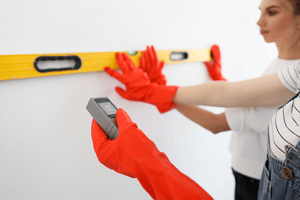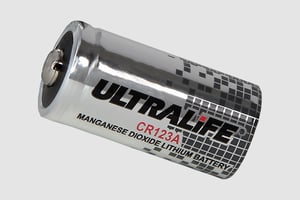~ Exploring the importance of batteries in laser rangefinders ~
 In a world that constantly pushes the boundaries of technological innovation, laser rangefinders have emerged as game-changers in a variety of industries. From construction to sports, military and law enforcement, the power of laser rangefinders to provide accurate distance measurements with unprecedented precision is undeniable. At the heart of these advanced electronic devices lies a crucial component: batteries.
In a world that constantly pushes the boundaries of technological innovation, laser rangefinders have emerged as game-changers in a variety of industries. From construction to sports, military and law enforcement, the power of laser rangefinders to provide accurate distance measurements with unprecedented precision is undeniable. At the heart of these advanced electronic devices lies a crucial component: batteries.
There are many benefits of using lithium batteries in laser rangefinders over traditional alkaline alternatives.
Laser rangefinders find applications in a wide range of industries, each benefiting from their unique capabilities. In the sports and outdoor industry, laser rangefinders are commonly used in activities such as golfing, hunting, and archery. Golfers rely on rangefinders to determine the distance to the flagstick or hazards, helping them to make more informed club selections. Hunters use rangefinders to measure the distance to their target, ensuring ethical and precise shots, and archers utilize rangefinders to gauge distances during practice and competitions, improving their accuracy.
 In the construction industry, laser rangefinders are used to accurately measure distances between structures, determine the alignment of buildings, and calculate volumes for earthwork projects. Laser rangefinders are also used to provide measurements to the military (such as the distance to targets) and law enforcement agencies (for crime scene investigations and accident reconstructions). Using advanced optics and laser technology, laser rangefinders can measure distances with exceptional accuracy.
In the construction industry, laser rangefinders are used to accurately measure distances between structures, determine the alignment of buildings, and calculate volumes for earthwork projects. Laser rangefinders are also used to provide measurements to the military (such as the distance to targets) and law enforcement agencies (for crime scene investigations and accident reconstructions). Using advanced optics and laser technology, laser rangefinders can measure distances with exceptional accuracy.
Devices typically consist of a laser emitter, a receiver, and a processor. The emitter sends out a pulse of laser light, while the receiver detects the reflected beam. The processor calculates the time it takes for the laser beam to return, converting it into a distance measurement. This information is then displayed on the rangefinder's screen, providing users with real-time data.
A variety of distances can be measured with a rangefinder, from under one meter to several kilometres (product dependent). Additional features may also be offered, such as angle compensation that considers the angle between the device and the target to provide accurate horizontal distance measurements. Some models even incorporate GPS technology, allowing users to obtain precise coordinates.
Such additional functionality is often at the forefront of manufacturers’ and designers’ minds, however it is also important to think about how these devices can be reliably powered. Modern laser rangefinders often use non-rechargeable lithium manganese dioxide (LiMnO2) CR123A batteries, which offer several advantages over traditional alkaline non-rechargeables.
 For example, LiMnO2 batteries boast a flat discharge curve and low internal resistance, which keeps the voltage consistent throughout use (unlike alkaline alternatives). This is useful for rangefinders because any drop in battery voltage could impact the device's laser output and result in diminished accuracy. LiMnO2 batteries also have a nominal voltage of around 3V, which means that one cell can be used as opposed to two 1.5V alkaline cells, allowing the physical size of rangefinders to be reduced.
For example, LiMnO2 batteries boast a flat discharge curve and low internal resistance, which keeps the voltage consistent throughout use (unlike alkaline alternatives). This is useful for rangefinders because any drop in battery voltage could impact the device's laser output and result in diminished accuracy. LiMnO2 batteries also have a nominal voltage of around 3V, which means that one cell can be used as opposed to two 1.5V alkaline cells, allowing the physical size of rangefinders to be reduced.
Another advantage of LiMnO2 batteries is that they can operate at a low temperature of -20°C, making them more reliable in harsh outdoor environments (such as construction, hunting and military) when the weather is cold.
However, not all CR123A cells have the same characteristics. Ultralife has enhanced its CR123A (UB123A) – giving it a high pulse discharge of up to 3,000mA to improve the brightness of illumination equipment. A maximum continuous current of 2A gives up to 6W of constant power.
That is why it is so important to ensure that careful consideration goes into battery selection when designing or manufacturing a rangefinder, as it can affect the device’s performance and the accuracy of its measurements. With high quality batteries, users can enjoy extended usage, enhanced accuracy, and adaptability to different environments.


